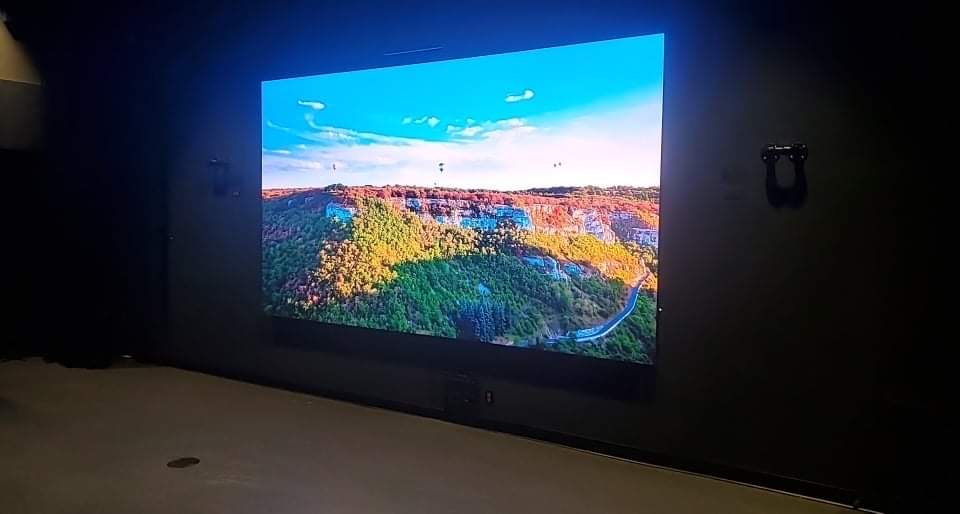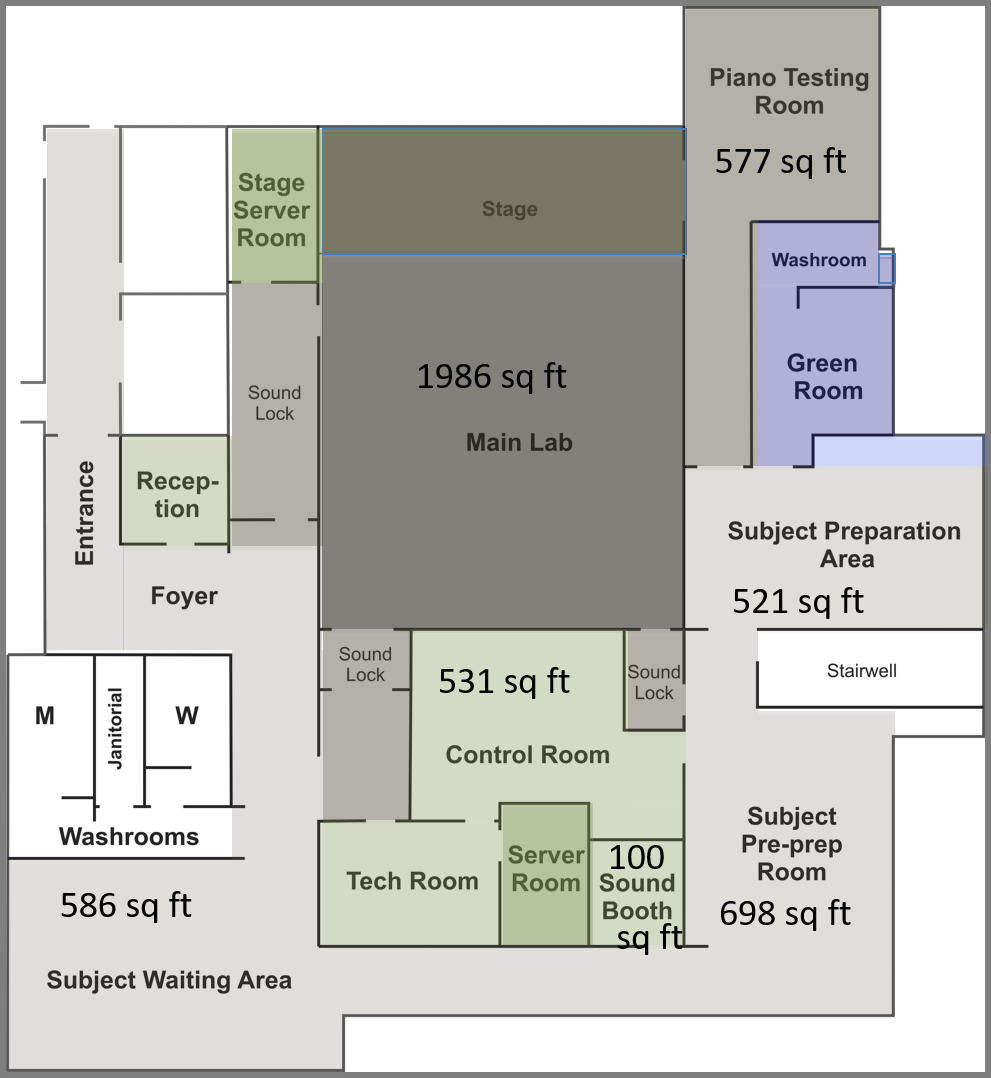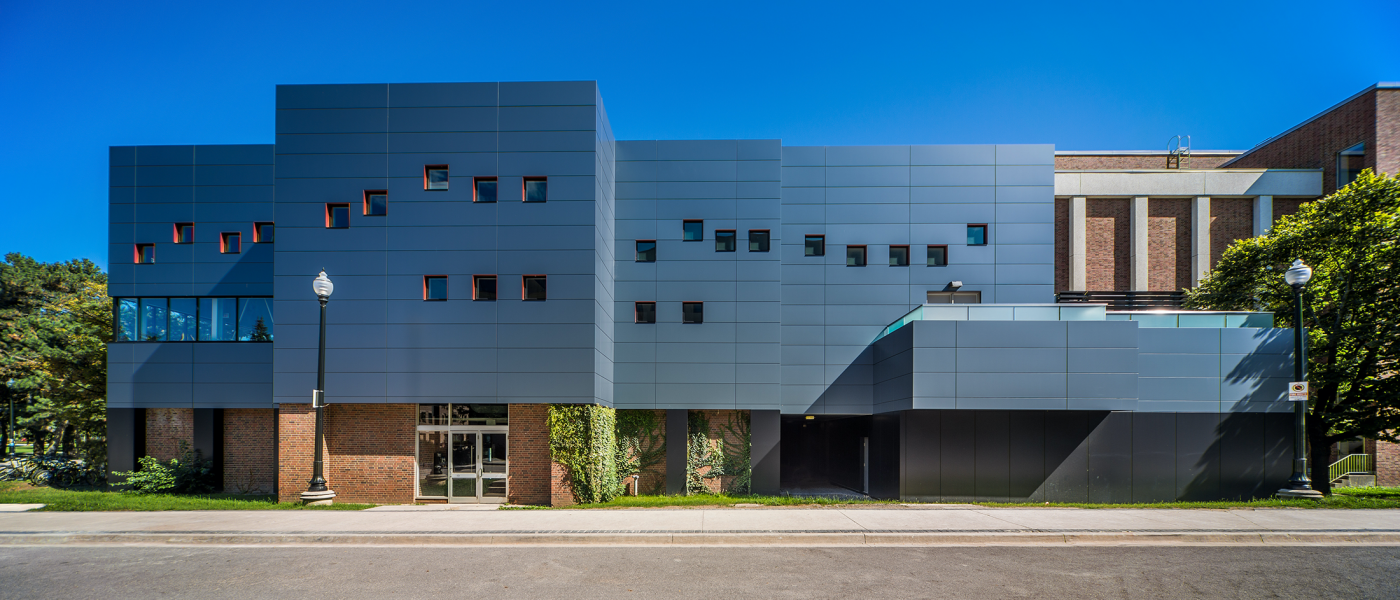TECHNOLOGY & FACILITY
Brain waves and physiology Spec Sheet
One of the most unique features of our lab is the ability to measure the brain waves (EEG), heart rates, breathing rates, and skin conductance (GSR) of up to 32 audience members or performers at the same time. This allows for studying physiology en masse in response to stimuli. Our lab’s Noraxon Wireless DTS can capture muscle activity from up to eight separate channels, as well as biological activity (heart rates, breathing rates, body temperature and in up to four people. Simple, unobtrusive, and lightweight transmitters are attached to participants quickly and easily allowing for new research innovations.
Check out EEG in action here:
Applications: Studying changes in physiology in response to a performance or media piece, see changes in heart rate variability, provide live feedback to performers, muscle use measurement, measurement from moving participants, teaching and training, and more.
Active acoustics Spec Sheet
Our lab was built to NC10 standards. There is a background noise level of only 10dB which is thousands of times quieter than a typical classroom. Our lab features unique architectural designs, including room-within-room construction, a floating floor, concrete outer ceiling, a custom noiseless HVAC system, and acoustic panels. Our lab’s Meyer Sound Active Acoustic System can digitally recreate any type of environment, from a cathedral and concert hall to a classroom, subway station and anechoic chamber. The acoustic system can also immerse audiences in simulated sound environments.
Applications: Studying hearing aids in realistic environments, studying music in different acoustic environments, showcasing uniquely sounding performances, and more.
Motion capture Spec Sheet
Our Qualysis Motion Capture System features 28 IR Cameras and one color camera. Using infrared light and advanced analysis, the system precisely captures the motion of participants on stage. All the markers are passive and can easily be placed on desired joints.
Applications: Studying movement in Parkinson’s disease, capturing the movement of dancers and musicians, capturing the position/view of audience members’ heads, and more.
Yamaha Disklavier Spec Sheet
Our state-of-the-art Yamaha Disklavier M4 Pro records and reproduces the exact timing and velocity of each keystroke allowing for the perfect reproduction of any performance. The Disklavier can also be networked for remote performances and recordings can be modified with changed timings or notes.
Applications: Studying the effects of live performances or recorded performances, pedagogy, training, and more.
Response tablets Spec Sheet
A suite of 100 android tablets can be used to collect responses from audience members during presentations. The tablets feature a number of question types and are synchronized with the stimuli.
Applications: Market research, behavioural studies, audience feedback during performances, and more.

Video wall Spec Sheet
A Samsung IE015R IER Series LED display unit (6.9′ x 12′) with 1.5 mm Pixel Pitch is mounted. These screens do not produce any noise while operating, which allows for an ultra-quiet lab environment. The stimuli presented on the video wall can also be synchronized with response tablets.
Applications: Stimuli presentation in research studies, market research, presentations and more.
KEMAR manikin Spec Sheet
Our lab has an anatomically average manikin with specially calibrated binaural microphones that record sound the way a real human would hear. This allows recordings of sound environment in the LIVELab that mirror what real participants would experience.
Applications: Hearing Aid testing, performance archiving, unique media, and more.

LIVELab Floor Plans Floor Plans
The LIVELab is proud to offer one-of-a-kind research and performance facilities. Access floor plans for our lab here.


